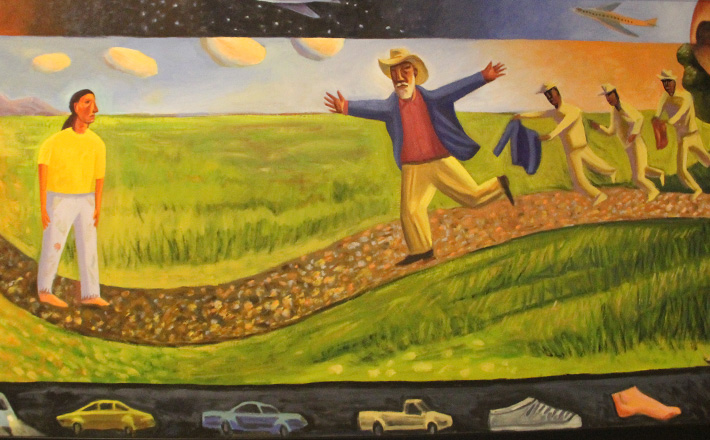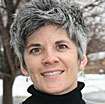Commentary on Psalm 30
In his article, “Psalms in Narrative Performance,” Walter Brueggemann writes about making generic Psalms concrete: “To re-narratize the Psalms is to protest against vacuous generalization and to focus on concreteness wherein real people live real lives of agony and ecstasy.”1
Brueggemann unapologetically suggests we update the subscriptions of Psalms. Psalm 30 is more than “A song of dedication of the temple. Of David.” It is “A song of thanksgiving for emotional healing. Of Marcie.” It is “A song of affirmation of vocation. Of Gail.” It is “A song of being restored into community. Of Brian.” No longer are these only David’s poems; they are ours. Consider “Marcie.” You know plenty of Marcies. They are in your community and in your congregation.
Psalm 30
A Psalm. A song of thanksgiving for emotional
healing. Of Marcie.
You have heard Marcie cry to the Lord and you prayed for her when she could not do so herself. And now, a breakthrough. “O Lord, my God, I cried to you for help, and you have healed me.”
Marcie does what the Psalmist does in verses 1-3, she prays to the Lord in thanksgiving, “Look what you have done. You have raised me up from the lowest of lows.” An ascent.
And then you notice Marcie telling her story to everyone (verses 4-5). She cannot help it. It’s her Easter story. She exhorts those around her, “Give thanks to his holy name.” She acknowledges the momentary Good Friday pain, “For his anger is but for a moment . . . weeping may linger for the night,” before the Easter joy trumps, “his favor is for a lifetime . . . joy comes in the morning.” It does no good to cover up the pain. Go ahead and acknowledge the pain for joy will come in the morning. Marcie testifies to this, and her heartfelt, lived proclamation is broadcast.
At some point, you notice that Marcie becomes more open and more articulate about the Pit, about that moment (verse 5a). She is far enough from the experience that she can now confess her previous overconfidence, “I said in my prosperity, ‘I shall never be moved.’” She still lives with the memory of her dismay when it seemed as if God’s face was hidden from her. It’s one thing to confess this to you, her pastor, or her closest friends — it’s another to confess it to God. But she does.
She confesses to God that she bargained with God à la Abraham (Genesis 18:23f.) She encouraged God to consider, “What’s in it for you, God? What profit is there for you if I stay in this low place? Will the dust praise you?” While Marcie may have negotiated in desperation, even on this side of that desperation the memory of her bargaining has remained with her. Her faithful self-awareness leads her to sing God’s praises and tell others of God’s faithfulness.
Marcie knows it was not her pleading that has brought her to this place of new life. She knows the Lord is the one who has turned her “mourning into dancing.” The Lord is the one who has removed her sackcloth and clothed her with joy (verse 11). She recognizes that the Lord did not do this so that she can return to a place of prosperity (verse 6), but so that her ascent to new life can focus on praising and thanking the Lord.
And praise and thank the Lord she does.
These four clear sections of Marcie’s story not only reflect the usual structure of a song of thanksgiving, they are a microcosm of the entire biblical story. The cry in Exodus 2:23-25, as Brueggemann reminds us, turns into dance in Exodus 15:20-21. The “Lord if you had been here” (John 11:21) turns into “Lazarus, come out!” (John 11:43). The “They have taken away my Lord” (John 20:13) turns into a simple but profound dialog: “Mary!” “Rabbouni!”
Even more, the movement of these four sections in Psalm 30 does not simply reflect the biblical story, it reflects the structure of our lives; it is our story as God’s people. Life is filled with rising up from labored breathing to filled lungs, from hunched shoulders to upright torsos, from Sheol to praise, from mourning to dancing, from death to life.
On this Sunday of Easter, craft the major moves of your sermon so that they reflect the four major moves of the Psalmist’s song of thanksgiving. Remind your congregation that this is the structure of our lives. Better yet, invite them into the movement from death to life. Some will already be dancing their praises and thanksgiving. Others will be crying for help, weeping, or feeling dismayed. Others are negotiating with God. All have their place in this Psalm.
The preaching task, especially in the Easter season, is to acknowledge the dancing even while offering the reminder that joy will come in the morning and the Lord’s favor is for a lifetime.
The pericope from John (21:1-19) reminds us that giving praise and thanks is not always a big production. Sometimes (usually?) the signs of rebirth are evident in the concrete elements of life: people gather, they work, they eat, they tend to one another, they love. Jesus’s resurrection appearance to his disciples turns their mourning into dancing. It is probably not too far-fetched to think that on that day by the Sea of Tiberias, the disciples began to sing, “I will extol you, O Lord, for you have drawn me up . . .”
1Walter Brueggemann, “Psalms in Narrative Performance,” in Performing the Psalms, ed. Dave Bland and David Fleer (St. Louis: Chalice, 2005) 9-29.


April 14, 2013